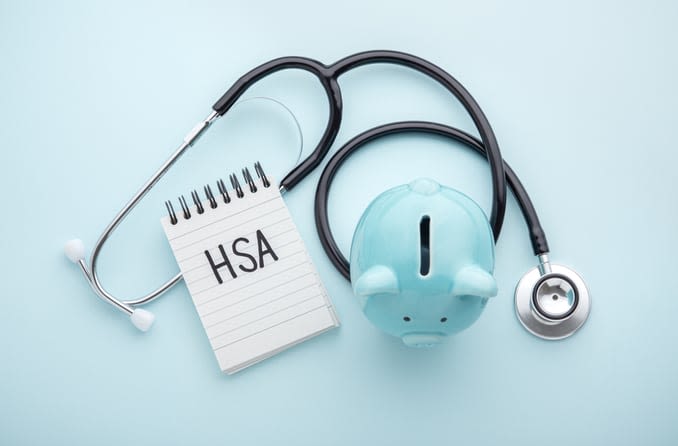What is an HSA, and how does it work?

A health savings account (HSA) is a savings account made up of pre-taxed salary dollars. HSA dollars can be used to help pay for many health expenses, including vision care.
However, HSAs are only available to those who are enrolled in an eligible high deductible health plan (HDHP). This is roughly about 42% of Americans.
If you are eligible, opening an HSA is a great way to save money on healthcare expenses for you and your family.
How does an HSA work?
An HSA is used to make paying for medical expenses more manageable for consumers and employers. If your medical or vision insurance plan does not cover the entire amount of a bill, or if you have other out-of-pocket expenses, you can help pay for them by using your HSA.
Both you and your employer can contribute money to your HSA up to a certain amount that is determined by the IRS every year.
The contributions you make to your HSA through your paychecks are tax-deductible for federal income tax purposes, and any money you choose to withdraw from your HSA is not taxed as long as it is used for HSA eligible products.
SEE RELATED: What is the difference between an HSA and FSA?
Who is eligible for HSA?
HSAs are available only for those who are enrolled in an eligible high deductible health plan (HDHP) under their current health insurance.
In addition, you may not be enrolled in Medicare, claimed as a dependent on anyone’s tax return, or have any additional HDHP health insurance coverage to be eligible for an HSA.
For more information about your HSA plan, contact your provider and/or employer.
How much can I contribute to an HSA in 2021?
The amount allowed for contributions to an HSA is determined by the IRS every year. As for 2021, the maximum contribution amount for an individual HSA is $3,600 and $7,200 for family accounts.
Funds will remain in your account until they are used, as long as you are employed.
What is covered by an HSA?
You can use HSA dollars via your HSA card or a reimbursement to pay for eligible medical, dental and vision care expenses, including deductibles and copays. Just a few of the vision care expenses you can pay for with an HSA include:
Eye exams
Eye condition screenings for conditions such as glaucoma and cataracts
Prescription eyeglasses
Prescription sunglasses
Contact lenses
Contact lens care, such as contact solution and protective cases
While deductibles and copays are covered, it’s important to note that premiums are not. Many retailers accept HSA cards at the point of purchase, but for those who do not, or for any other circumstances in which your HSA card is unavailable for use, you can pay with a regular credit or debit card and then send a receipt to your HSA provider for reimbursement.
What is an HSA card?
A certain amount of pre-taxed salary dollars are placed into your HSA at the beginning of the year. This amount depends on how much money you and your employer contribute to the account.
How do you spend HSA dollars? This is where your HSA card comes into play. Typically, you will receive an HSA card, which works as a debit card linked to your account.
Use your HSA card the way you would use a debit or credit card at checkout for services, prescriptions, prescription eyewear and other eligible out-of-pocket expenses.
What is HSA distribution?
HSA distribution is any money taken out of the account by the account owner, as well as anyone the owner designates power to take money out of the account, such as a spouse or family members.
If money from an HSA is used to pay for eligible products or services, the amount is not taxable. However, if ineligible items are purchased with HSA dollars, the account owner could be penalized.
STILL HAVE QUESTIONS ABOUT HSAs OR FSAs? Head over to our FSA and HSA resources to learn more.
Page published on Thursday, September 26, 2019




